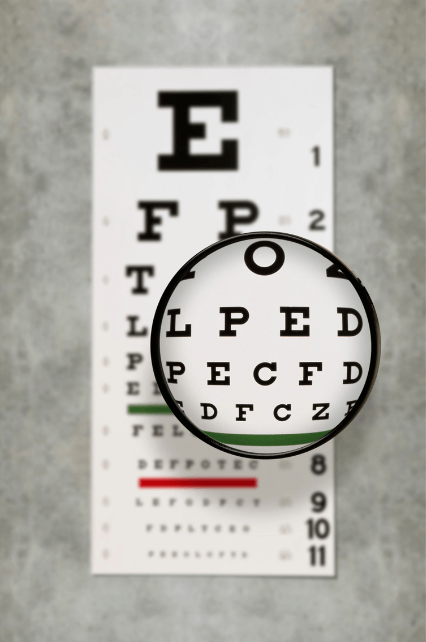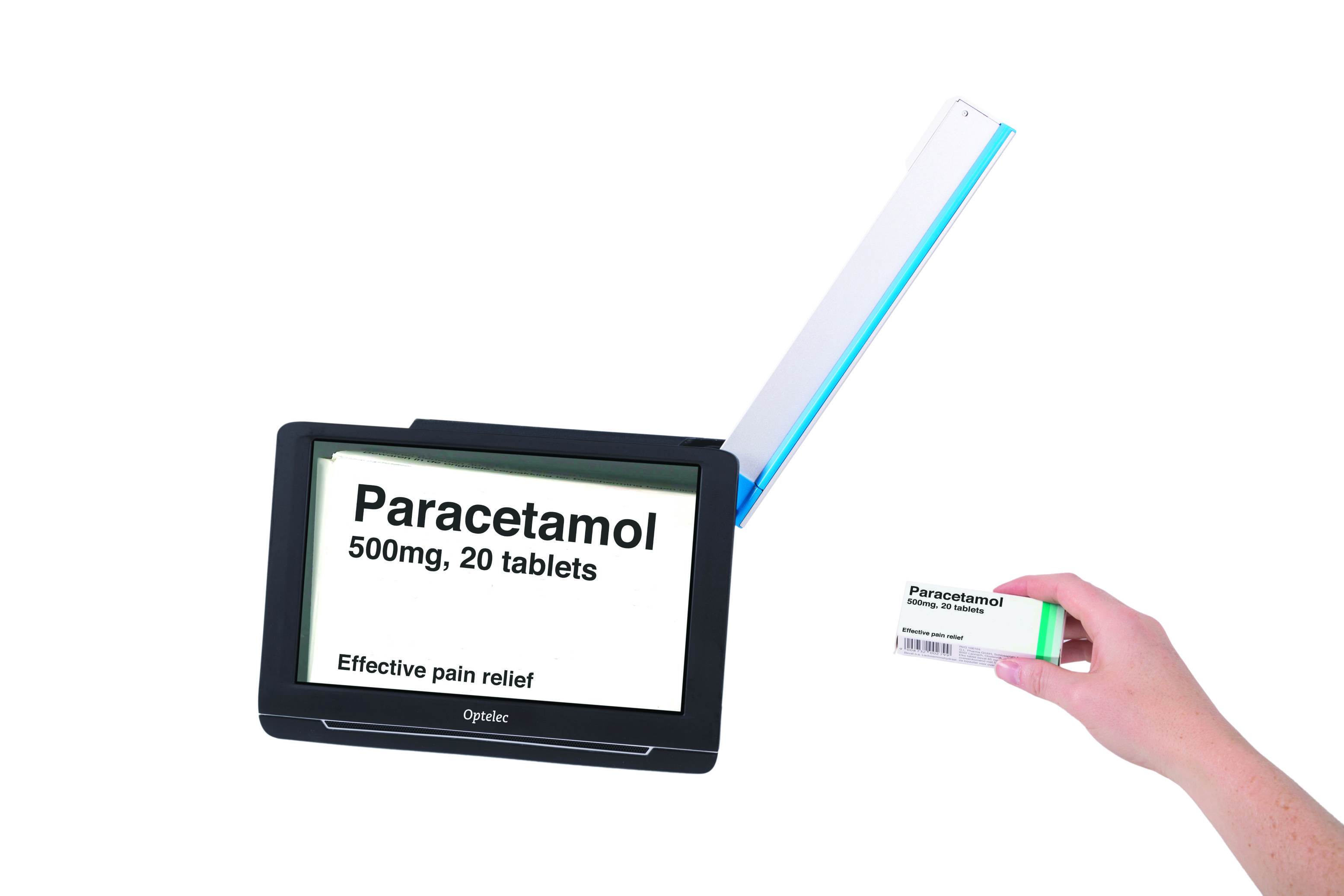Understanding low vision aids for macular degeneration
Low vision aids for macular degeneration are designed for people experiencing vision loss, including loss of central vision due to any type of macular degeneration. These types of aids help the user maximize their remaining sight, leading to greater independence and enhanced quality of life.
What are the different types of macular degeneration?
There are three types of macular degeneration: wet, dry, and Stargardt’s disease.
Wet and dry macular degeneration both fall under the category of age-related macular degeneration, or AMD. Stargardt’s is a hereditary disease affecting younger people.
Age-related macular degeneration is a progressive eye disease that may worsen over time as the central portion of the retina, called the macula, wears down. AMD is the leading cause of severe vision loss for people aged 60 and older.

NIH estimates that between 2010 and 2050, the number of people with AMD will more than double from 2.1 million to 5.4 million. Source: nih.gov
There are two forms of AMD: dry and wet. In the dry form, yellow deposits called drusen develop on the macula, obscuring vision as they become bigger and more numerous. With disease progression, light-sensitive cells in the macula thin out and eventually die. People with dry AMD can experience blind spots in the center of their vision or complete loss of central vision.
The dry form of AMD can lead to wet AMD, in which blood vessels underneath the macula leak blood and fluid into the retina. The leakage may result in distorted vision, blind spots, and permanent loss of central vision.
While there is no cure for macular degeneration, treatment may slow the disease and prevent severe vision loss. Treatment options for wet macular degeneration may include eye injections and laser therapy.
Why are low vision aids for macular degeneration important?
If you have macular degeneration, it is important first and foremost to visit your eye doctor regularly and discuss any vision changes. In general, you’ll want to do everything possible to maintain your eye health, preserve your remaining vision, and find the right tools to optimize your sight.
While vision loss at any age can be devastating, people with macular degeneration can still lead full, independent lives with the help of technology. Low vision aids afford patients the chance to continue working, studying, and going about their daily lives. Although some patients may be wary of new technology, with a little time and practice, the rewards are infinite.
As business owner Bernie McGee puts it, “If I didn’t have the access to adaptive technology I would have to forfeit most of what I do.”
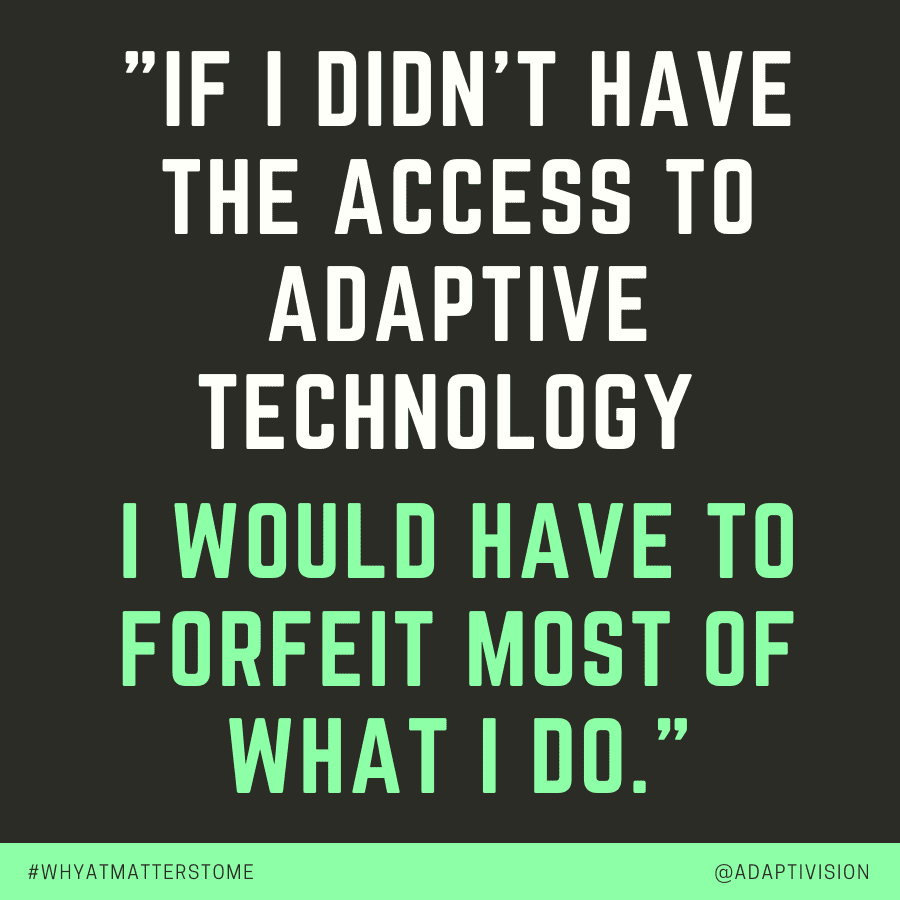
7 Real Examples of Low Vision Aids for Macular Degeneration
Here are some of the most popular, commonly-used low vision aids for macular degeneration.
- Optical magnifiers
- Magnifying spectacles / Distance glasses
- Video magnifiers
- Wearable devices
- Other devices and apps
- Low vision lamps
- Daily living aids
Optical magnifiers
Handheld magnifiers
Handheld magnifiers are used to enlarge images and text. They require a steady hand to move the magnifier closer or farther away until the image comes into focus. Magnifiers are made in many different strengths, and some offer built-in lighting, which can be very helpful to people with macular degeneration who may struggle to see in dim lighting environments.
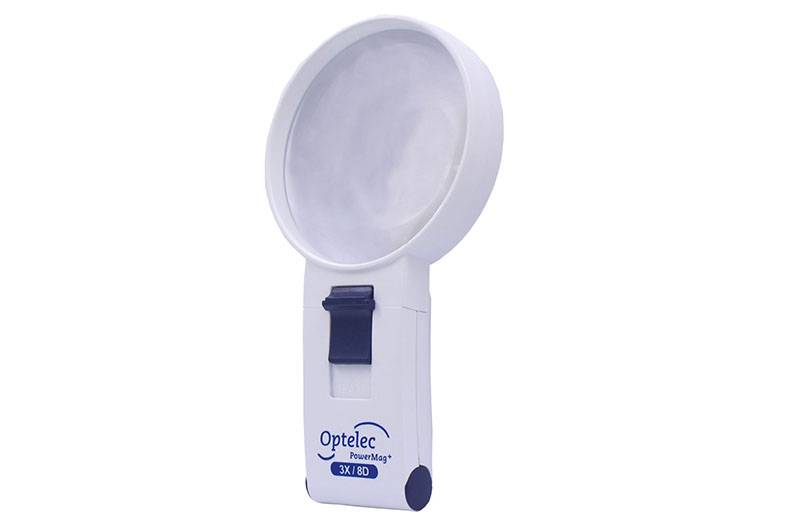
The Optelec PowerMag is one of the highest-quality magnifiers featuring superior German optics by Schweizer for a clear, well-defined image. The PowerMag has a built-in LED light and is available in strengths ranging from 2.5x-15x.
Stand magnifiers
A stand magnifier stands on its own and allows the user to magnify an entire page of reading material. These work best for flat pages (like newspapers). Some also have integrated lighting.
Magnifying spectacles / Distance glasses

Source: visionaware.org
Much stronger than average reading glasses, magnifying spectacles (or magnifying reading glasses) can be used to see words on a page or fine details like needlework. They should not be used for walking around since they can throw off depth perception.
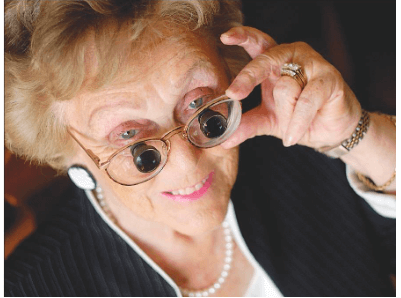
Bioptic telescopic glasses for low vision. Source: opticalimages.com
Distance glasses have binoculars mounted on to the lenses, assisting the viewer with activities like watching television, attending a concert, or looking at art in a museum.
Video magnifiers
Another popular low vision aid for macular degeneration is a video magnifier. Ranging from about the size of a cell phone to that of a desktop computer, video magnifiers use a camera to project an image onto a screen.
In addition to adjustable magnification, video magnifiers have lots of helpful features which may include built-in lighting, color contrast, and even text-to-speech.
The Optelec Compact 10 HD Speech is an example of a portable video magnifier that reads full pages aloud. It also has a unique swing-out camera arm for viewing 3D objects like medication bottles. Another model, the Compact 8, features proprietary technology that enhances the contrast of similar colors, producing super sharp, well-defined images and text.
Desktop video magnifiers have a moveable tray table that can be especially helpful to people with macular degeneration. By moving the tray to the left or right, the user can take advantage of their peripheral vision instead of relying on central vision to view images or text.
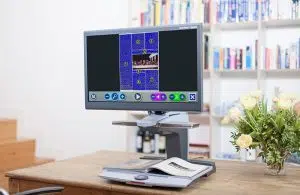
To learn more about magnifiers, read “What are low vision magnifiers?” on our blog.
Wearable devices
Wearable devices are high-tech aids that can serve a variety of purposes, from magnification to navigating the environment to face identification and more. Here are some of the most popular wearables for low vision, including AMD.
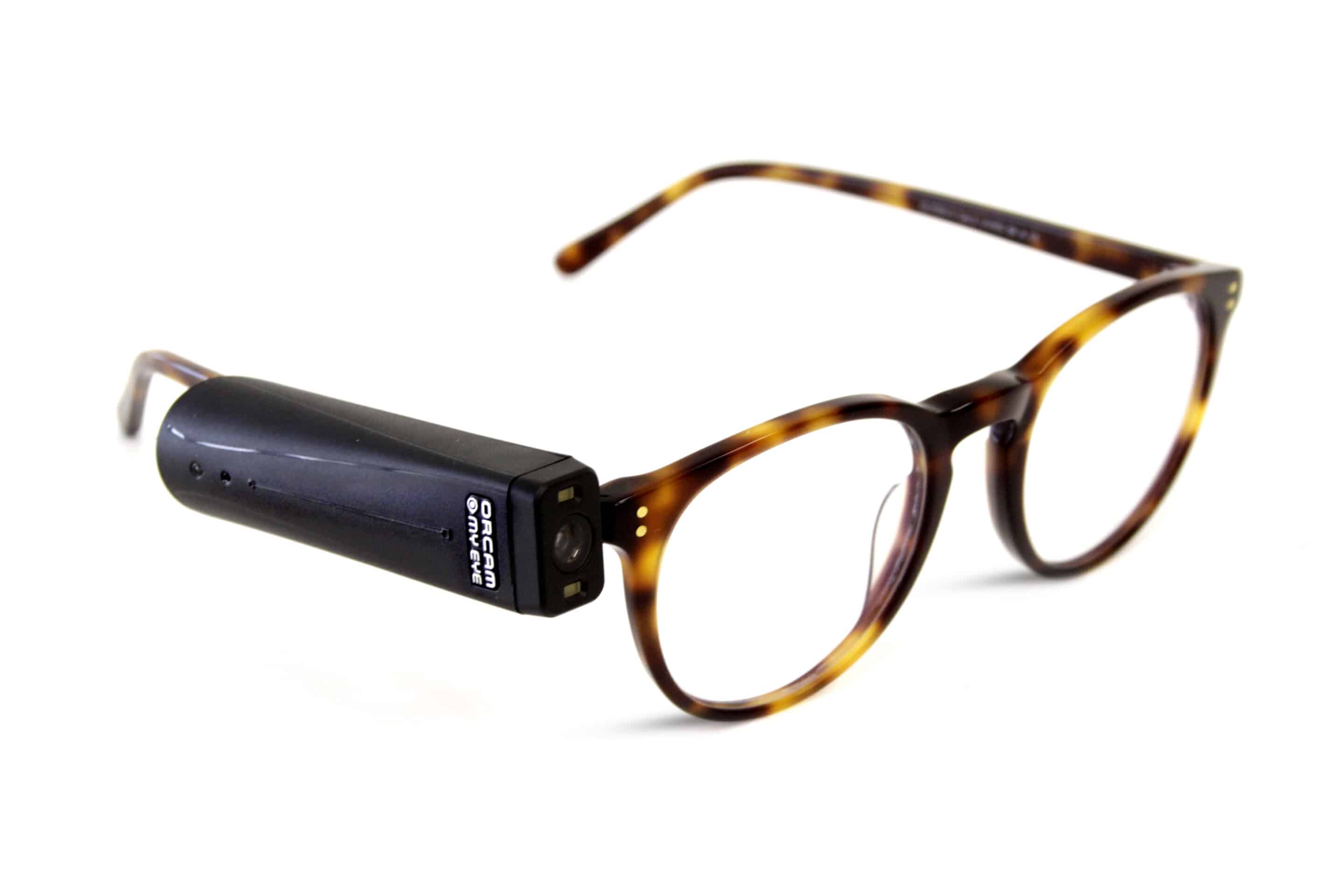
The OrCam MyEye 2 PRO is a small, discreet and lightweight camera that attaches magnetically to any pair of eyeglasses. It uses artificial intelligence, or AI, to convert text to speech and recognize faces, identify products, distinguish colors, and more.
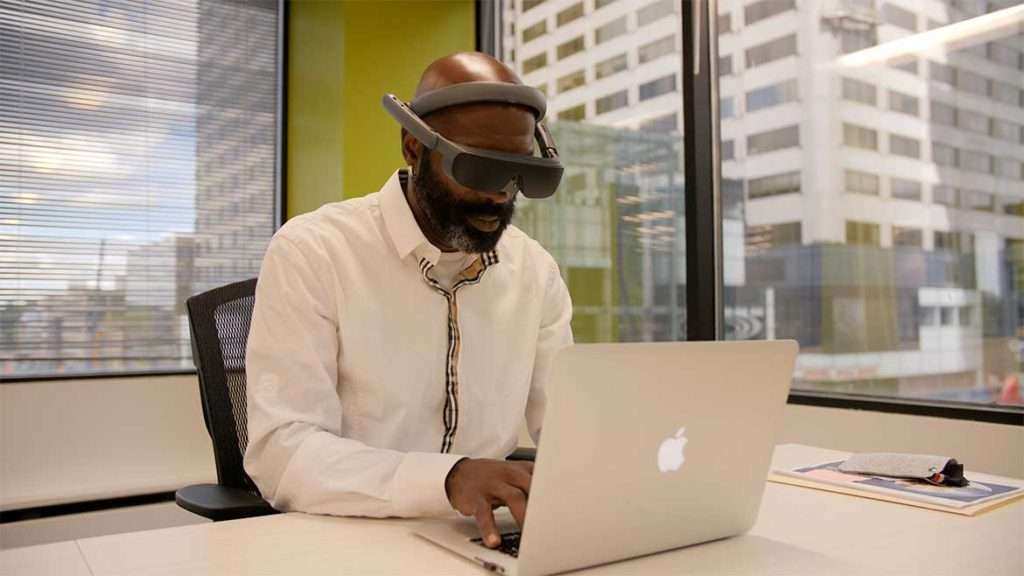
eSight is an all-in-one wearable for macular degeneration and other visual impairments. Remarkably, many people who are legally blind achieve 20/20 visual acuity while wearing eSight glasses. Learn more about how eSight works.
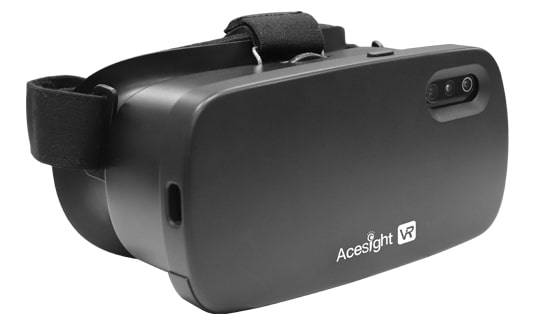
Acesight VR is known for its excellent image quality thanks to a 48 megapixel camera. Comfortable, lightweight and hands-free, it can be used for watching TV, reading, seeing faces, and enjoying your surroundings.

Eyedaptic glasses optimize remaining vision for people with age-related macular degeneration and other eye diseases. The EYE4 model functions as both a wearable visual aid and a handheld magnifier, and it is one of the most affordable wearables on the market right now.
To learn more about wearables, read “What are low vision glasses?” on our blog.
Other devices and apps
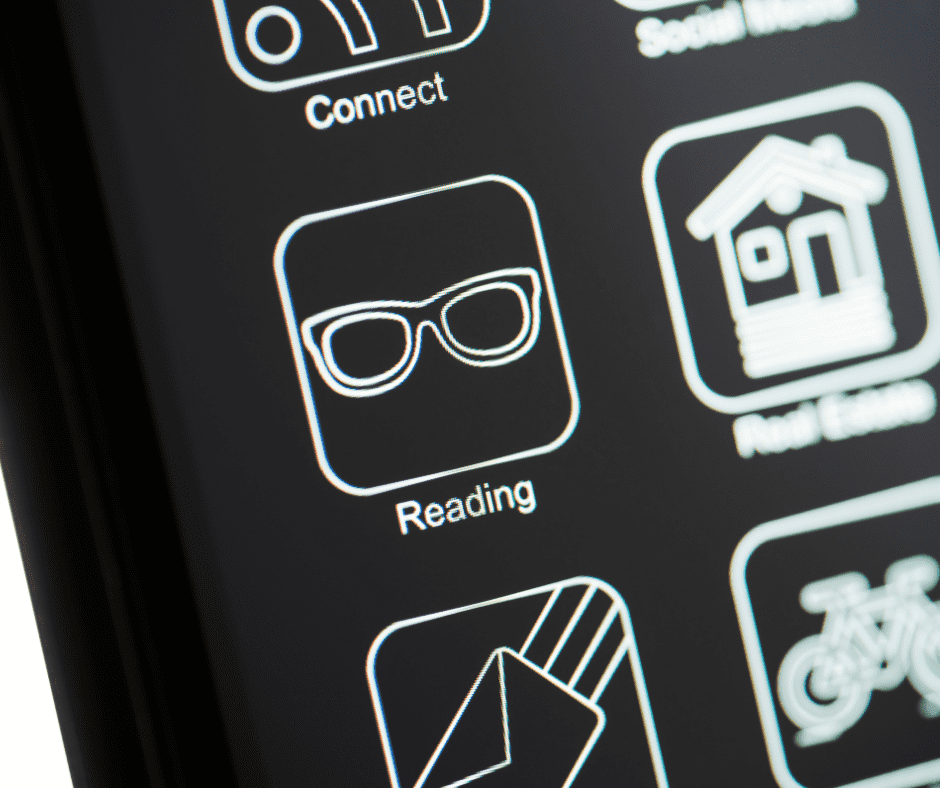
Most smartphones have built-in accessibility features. Additionally, third-party apps for both Apple and Android devices can help people with magnification, extra light, navigation, and converting text to speech or Braille.
There are also specialized smartphones made for people with low vision. These are often designed with features like raised, tactile buttons for easier use compared to a traditional touchscreen.
And, most e-readers have customizable settings like font size and color contrast. They can be used for reading e-books, browsing websites and checking email.
Low vision lamps

High-quality lighting is an essential low vision aid for macular degeneration. Proper lighting reduces eye strain and minimizes glare while giving the user control over the light color, brightness, and direction. Low vision lamps can be used on their own, but we also recommend pairing them with other types of assistive technology, like video magnifiers or magnifying glasses.
Stella GO is one example of a high-quality LED task lamp that is great for low vision. The Stella GO is portable and rechargeable, so you can take it from one room to the next for daily tasks around the house.
Daily living aids
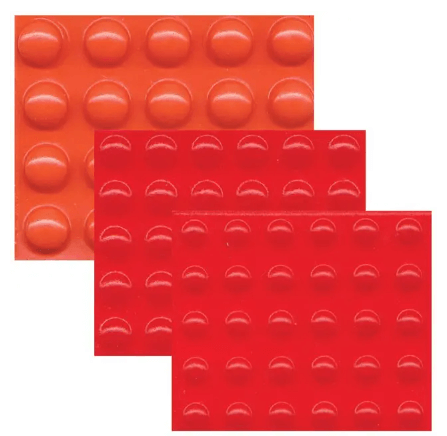
Bump dots are adhesive tactile markers that can be placed on everyday items. They are a great tool for marking frequently-used settings on appliances like washing machines and microwaves. Source: everydaysight.com
There are a wide variety of daily living aids that can help people with macular degeneration complete different tasks around the house or on-the-go. Some popular examples include bump dots, kitchen tools like liquid-level indicators, bold-tip markers, high-contrast computer keyboards, and talking scales.
3 Tips for Choosing a Low Vision Aid for Macular Degeneration
How do you know which low vision aid is right for you or your loved one? Here are 3 tips to help you choose wisely.
- It is important to consult with your eye doctor, low vision specialist, and/or rehabilitation therapist to determine which tools can help you best meet your goals. A low vision technology specialist can also help you narrow down the options and find the right solution for your needs and budget.
- When analyzing low vision aids for macular degeneration, make quality a priority. While there are many lower-cost devices available to consumers, not all are created equally. Look for reputable brands like the ones mentioned in this article, and check reviews and manufacturer warranties.
- Lastly, seek out a qualified, well-established technology vendor. You may want to check how long the vendor has been in business and what’s included with your purchase. Does the company offer training, service, and/or repairs? With the purchase of new technology, you are making a significant investment of your time and finances, and it’s important that the company you work with is aligned in helping you reach your goals.
Final thoughts
Low vision aids for macular degeneration can be a great investment for improving one’s quality of life while dealing with vision loss. By helping people complete daily tasks on their own, low vision aids ultimately help people with macular degeneration maintain their independence. The number of choices can be overwhelming, so it’s important to consider your goals and speak with your team of professionals when selecting a low vision aid. And remember, a high-quality tool will give you the best chance of success.
Have questions about low vision aids for macular degeneration? We are ready to listen. For expert, personalized advice, book a free, no-obligation consultation with us today.
Request AppointmentAuthor Information
By Bethany Wyshak. Reviewed by Stuart Flom.
Sources
Bird, C. (2019, April 25). Low Vision Devices for Macular Degeneration: Reviews, Cost, Comparison. Southwestern Eye Center. Retrieved July 30, 2022, from https://www.sweye.com/blog/retina/low-vision-devices-for-macular-degeneration/
Farabough, L. (2019, September 6). The Three Types of Macular Degeneration. McFarland Eye Care. Retrieved July 30, 2022, from https://www.mcfarlandeye.com/doctors-desk-blog/2019/9/6/the-three-types-of-macular-degeneration
Illiades, C. (2021, April 29). 7 Visual Aids for People With Macular Degeneration. Healthgrades. Retrieved July 30, 2022, from https://www.healthgrades.com/right-care/eye-health/7-visual-aids-for-people-with-macular-degeneration
Performance Health. (n.d.). The Top 10 Low Vision Aids for Macular Degeneration | Performance Health. Retrieved July 30, 2022, from https://www.performancehealth.com/top-10-low-vision-aids-macular-degeneration
WebMD. (n.d.). Age-Related Macular Degeneration. Retrieved July 30, 2022, from https://www.webmd.com/eye-health/macular-degeneration/age-related-macular-degeneration-overview

